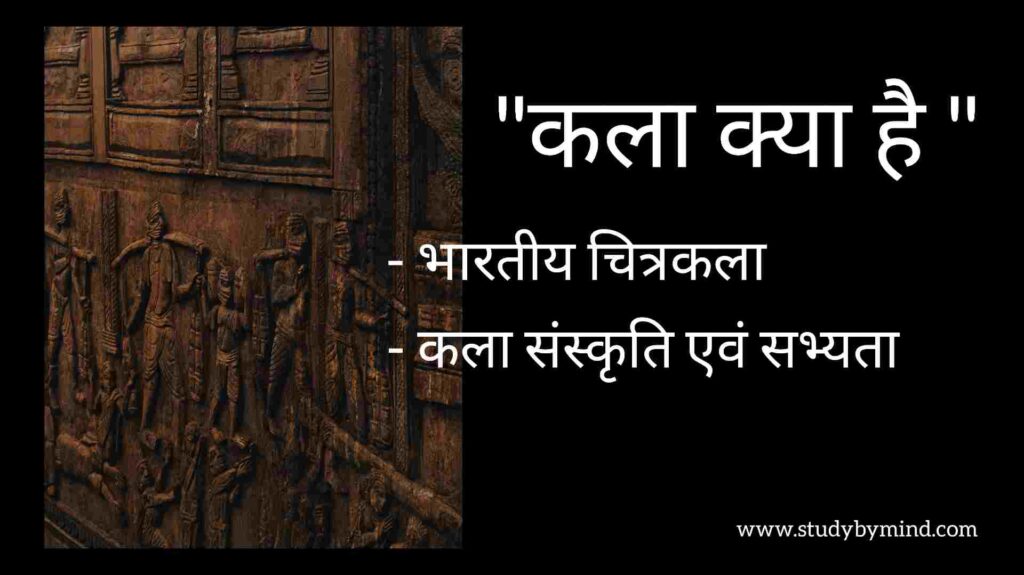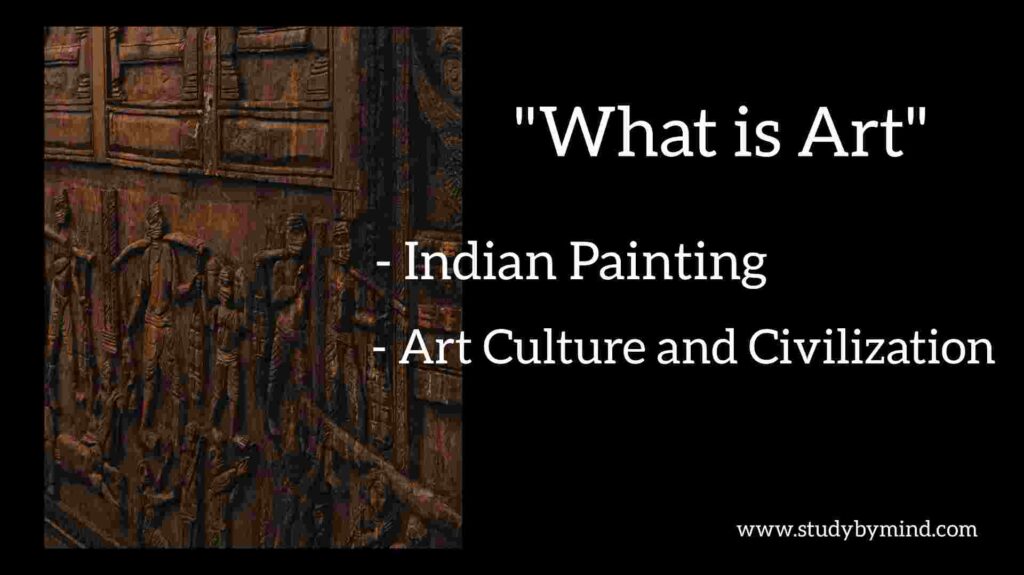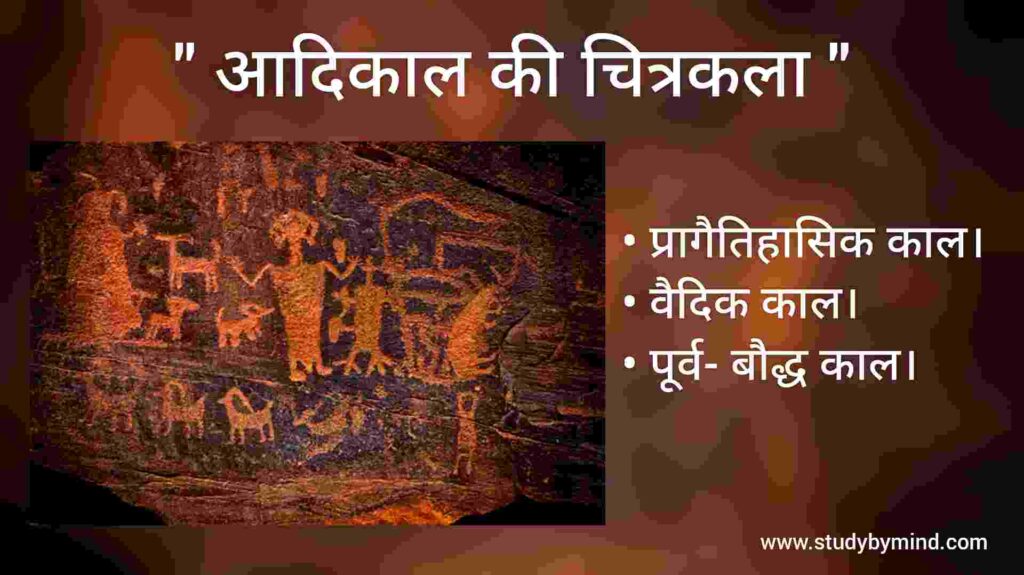Rise of Vedic Civilization
Vedic period emerges after the end of prehistoric period. Vedic Period and Art– Vedic period is a period of ancient Indian culture. The Vedic period begins with Dhatu Yuga. Very few examples of art of this time have been found. Mohenjodaro and Harappa were located in the valley of the Indus river, and a high civilization developed here, due to which scholars have called it Indus Valley Civilization. This Vedic civilization was widely spread in the plains of northern India. Vedic Period Notes .
वैदिक काल तथा कला in hindi – ” Click here “

Vedic period can be easily understood so it is divided into two parts –
- Rigvedic or Early Vedic period.
- Later Vedic period.
Here we have given more emphasis on explaining the art of the Vedic period in brief. Next we will tell you the art of Vedic period in detail.
Metal Age in Vedic Period
The Vedic period emerges with the Metal Age only after the prehistoric period ended. The Iron Age started only after the Stone Age in South India. But only after the Copper Age in northern India and the Bronze Age in Sindh came the Iron Age throughout India. After this, many bronze materials were also found in South India. But it is not known whether it is later or has come from other region. Vedic period in Hindi .
424 examples of instruments made of copper have been found in a village named Gunjeria in Madhya Pradesh. Which dates back to about 2000 years BC. Similarly, instruments and weapons of prehistoric age made of copper have also been found in Kanpur, Fatehpur, Mainpuri and Mathura districts in northern India. And from Hooghly in the north-east to Sindh in the west, examples of copper sickles, swords and spear blades etc. have also been found. The Copper and Bronze Age had begun in northern India long ago. And the Iron Age had started even before South India. In South India, the Stone Age continued for a long time. It is said that Atharvaveda is estimated to be 2500 earlier. And secondly it is said that it is known from the writings of the Greek historian Herodotus that in 480 BC under the chairmanship of Emperor Xerxes of Persia, the Indian army fought against Greece, He used arrows with iron plates. By the way, very few examples of art of this time have been received. Examples of Bronze Age art have been found only from the excavations of Mohenjodaro and Harappa. Mohenjodaro and Harappa are located in the “Valley of the Indus River“, and a high civilization developed here. For this reason, scholars have also called it by the name of Indus Valley Civilization. This Vedic civilization was well spread in the plains of northern India.
Art of the Indus Valley Civilization (3500 BC to 2500 BC)
From China to Central Asia and in India from 4000 BC to 3000 BC, a civilization was born. The credit for the discovery of this civilization Goes to Sarjohn Marshall and Dr. Ernest Mack. He had made the world aware of this civilization in the year 1924. In this vast area, the art of making red and black baked pottery developed special. These utensils were decorated with figures of animals, birds, human figures and geometric shapes. The old people called this civilization “castle-wares” It is also called by the name of civilization. In India and Pakistan this type of material Mohenjodaro, Harappa, Chanudro, Jhangar, Jhukar, Kulli And has been found after excavation from places called Lothal.
The Department of Archeology established itself in the Indus Valley region in 1922 AD. rd The work of excavation was started under Banerjee’s chairmanship, and the remains of a developed civilization were found in the excavations of Mohenjodaro in Lakhna district and Harappa between Lahore and Multan. He was ignorant of similar civilization in 1954 AD under Sardar Vala village of district Ahmedabad, a place called Lothal in Kathiawar region. R. Under the chairmanship of Rao. Remains of this type of civilization have also been found in Chanudaro.

This civilization developed in many stages, The evidence of which has been found in the excavation of many ground floors. Whose time division can be done in the following way. The fully developed form of this civilization has been obtained from the excavation done at many sites along the banks of the Indus river. For this reason this civilization has been called as Indus Valley Civilization.
- Pre-pottery civilization (whose period and form are not known)
- Cueta civilization — 3500 BC . to 3000 BC
- Amri-Nundranal Civilization — 3000 BC to 1800 BC
- Tropy civilization — 4000 BC From 2500 BC
- Cullision in itself – 2800 BC. to 2000 BC
- Harappan Civilization — 2700 BC to 2000 BC
- Harappa – Mohenjodaro and Lothal Civilization – 2200 BC to 1800 BC
- Jhunkar and Jhangar Civilization — 1500 BC
Interesting artistic material has been found in the excavation of these places. On the basis of which the subject of this year’s painting can be estimated.
Vedic Wall Painting
From the south of the Ural Mountains, between the 3rd century BC to the 2nd century BC, the Aryan race came to Europe, West Asia and India for further longitude residence. These castes established their influence on Asia and India got started. The Indo-Aryan race broke off from the Iranian-Aryan race 2000 years before Christ, and the people of the Indo-Aryan branch came to India from Turkistan (modern Russia) via Afghanistan. These people lived in villages with houses made of wood and mud with ramparts. Thus conquering the Indus region and ending the Indus Valley Civilization, this race moved towards the east, and from 1400 BC to 1000 BC, they took control of the whole of northern India.
The history of this period is not clear, it is unclear. Therefore, the knowledge of the progress of painting of this period can be obtained from literary works like – Vedas, Mahabharata, Ramayana or Puranas from art contexts. Gautam Buddha is believed to have been born in the 4th century BC. Along with their religious promotion, mentions of art development are also being received in Buddhist literature. By the second century BCE, the period of the compositions of Vedic literature ends. And their place is taken by Buddhism. Evidence of art painting of this time is not available, and the pictures found are of ordinary level. This painting is found today only in the cave of Jogimara, otherwise to estimate the painting of this period, one has to rely on literary references.
Interesting information about Vedic period and art
- The Department of Archeology established a self-containment in the Indus Valley region in 1922 AD. rd Under the chairmanship of Banerjee, the work of excavation was started.
- The main occupation of the Aryans in the Vedic civilization was agriculture and animal husbandry.
- Knowledge of the progress of painting of this period in literary works like- Vedas , Mahabharata, Ramayana or can be obtained from the art contexts obtained from the Puranas.
- 424 examples of instruments made of copper have been found in a village called Gunjeria in Madhya Pradesh.
- Prehistoric The Vedic period emerges after the end of the period.
- The credit for the discovery of this civilization Sarjohn Marshall and Dr. Ernest Mack .
FAQ
Q. When was the Indus Valley Civilization discovered?
A. Mohenjodaro and Harappa are located in the “Valley of the Indus River”, and a high civilization developed here. For this reason scholars have also called it by the name of Indus Valley Civilization.
Q. Which was the first civilization of India?
A. The Vedic period emerges after the end of the prehistoric period. The Vedic period is a period of ancient Indian culture.
Q. How many civilizations are there in India?
A. There are 6 civilizations in India
Q. Who was the founder of Vedic culture?
A. Max Müller was. The civilization built by the Aryans is called Vedic civilization. The Vedic civilization was widely spread over the plains of northern India.
Q. Into how many parts is the Vedic period divided?
A. Vedic period can be easily understood, so it is divided into two parts-
•Rigvedic or pre-Vedic period
•Later Vedic period
Q. What was the main occupation of Vedic civilization?
A. The main occupation of the Aryans in the Vedic civilization was agriculture and animal husbandry.
See also
- more about Vedic period – “ Click here “
- Prehistoric Period and Art – ” Click here “
- Primordial Ancient Painting – “ Click here “


